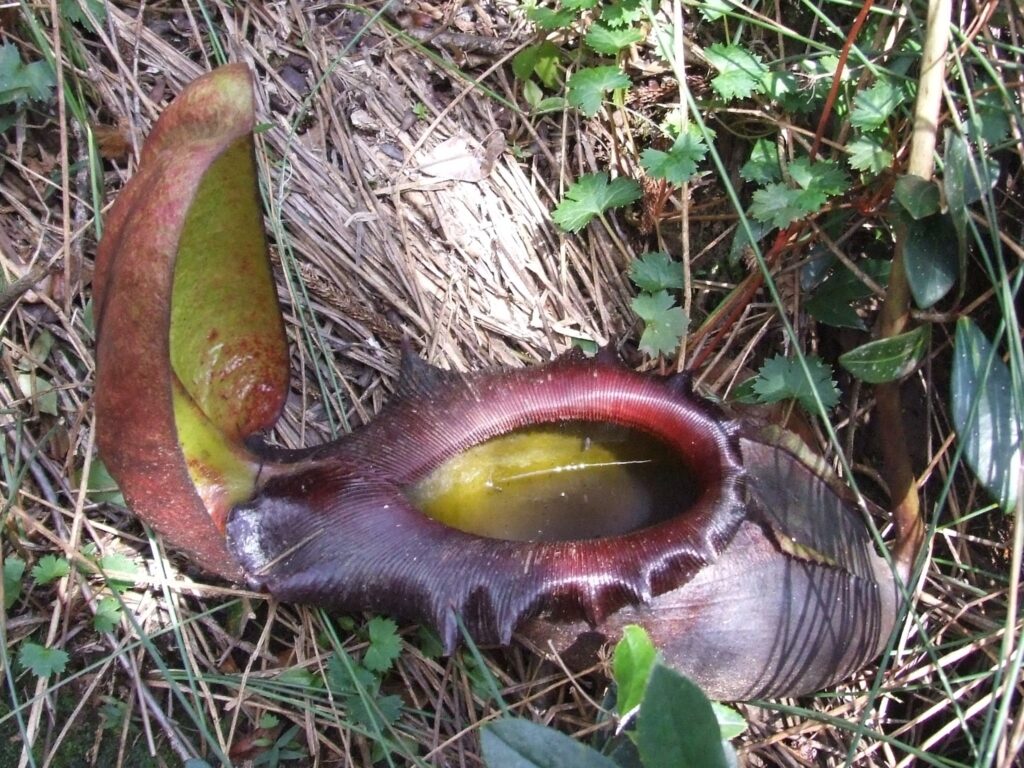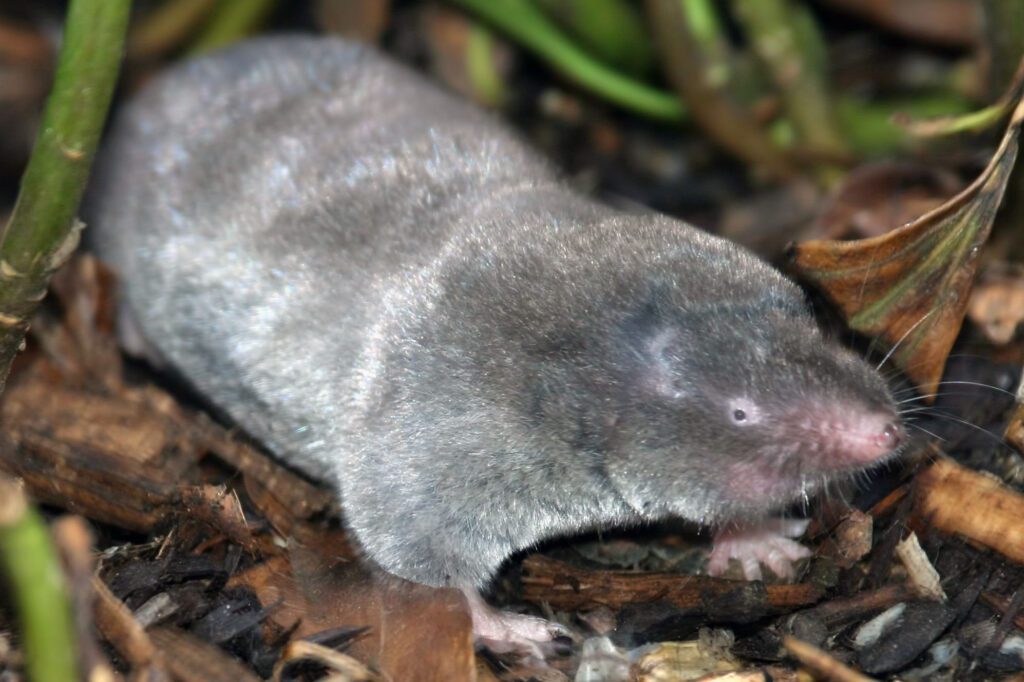by Erin Southerland
March Mammal Madness (MMM) bracket advice: look up the scientific names of species on the MMM website before you make your predictions. While MMM can be silly and ridiculous, it is an educational tool and the details matter. Let’s explore why by looking at the Pitcher Plant (7) vs. Northern Short-tailed Shrew (10) match.
Pitcher plant isn’t a specific species of plant, rather it describes plants with a modified leaf that resembles and acts like a pitfall trap.

Bonnie Isaac, Collection Manager of Botany, says:
Generally, when we use the term pitcher plant, we are referring to a member of either Sarraceniaceae or Nepenthaceae. Both pitcher plant families evolved in areas where essential nutrients for plants are lacking. They needed to find a way to get their nutrients by other means. Enter carnivory.
Pitcher plants in both families primarily eat insects, but they are generalists that will catch and digest anything that comes along. However, one of these families is more likely than the other to be able to digest the Northern Short-tailed Shrew.
Bonnie tells us:
Sarraceniaceae are normally ground dwelling plants with trumpet-shaped leaves that are used to capture their prey. Many of these pitcher plants have hairs on the inside of the tube that point downward to keep the prey from crawling out. They may also have clear areas near the top of the tube to attract insects.
Members of Nepenthaceae are tropical plants that frequently have a climbing stem. The modified pitcher leaves on these plants are normally of two types: one grows up in the trees that support the vine, the other grows near the ground. The trap leaves near the ground are normally larger than the aerial trap leaves and can digest larger prey. With two types of traps these plants are opportunists and ready to capture whatever may happen into the traps.
The pitchers of Sarraceniaceae are normally not large enough to hold a Northern Short-tailed Shrew. Nepenthes on the other hand has pitchers that are large enough to hold shrews. Some Nepenthes species attract rodents by giving them a reward. The rodent in turn gives the plant nutrients either by defecating into the toilet-shaped leaf or by falling into the pitcher and being digested. Species of Nepenthes are known to trap and digest vertebrates, including rats and mice. If by chance a Northern Short-tailed Shrew happened upon a Nepenthes and fell into the trap the shrew wouldn’t stand a chance.
Since the species of pitcher plant selected for March Mammal Madness is Nepenthes rajah, it has a chance to beat the Northern Short-tailed Shrew (Blarina brevicauda).

Sue McLaren, Collection Manager of Mammals, also notes that either competitor has a chance (it is March Mammal Madness, after all):
When I think of the short-tailed shrew, I think of a fierce temperament when confronted by something dangerous. They are good climbers (I’ve seen them climb a tree trunk to a point at least eight feet off the ground). Even though their claws seem a little puny, they are more fossorial (adapted for digging and burrowing) than any other shrew so they can dig their way through densely compacted leaves and easily move through some types of soil (probably not heavy clay). Finally, they have salivary glands that produce a toxin that can subdue prey that are larger than themselves – salamanders, frogs, mice, and even birds! However, their climbing ability is probably their best defensive from inside a pitcher plant.
Anything could happen in this sure-to-be-exciting match! But if the pitcher plant was from the family Sarraceniaceae it wouldn’t be nearly as exciting.
Want to play March Mammal Madness?
Get started with these links:
Fill out your bracket by March 10, 2024 to play this year. The competition kicks off March 11 with the Wild Card: Rainbow Grasshopper (Dactylotum bicolor) vs. Sparklemuffin Peacock Spider (Maratus jactatus).
Erin Southerland is Communications and Social Media Manager at Carnegie Museum of Natural History.
Related Content
March Mammal Madness 2023: Learn and Win
March Mammal Madness and Middle School Science Class
Wolverine: Status Check for a Tournament Champion
Carnegie Museum of Natural History Blog Citation Information
Blog author: Southerland, ErinPublication date: February 29, 2024
